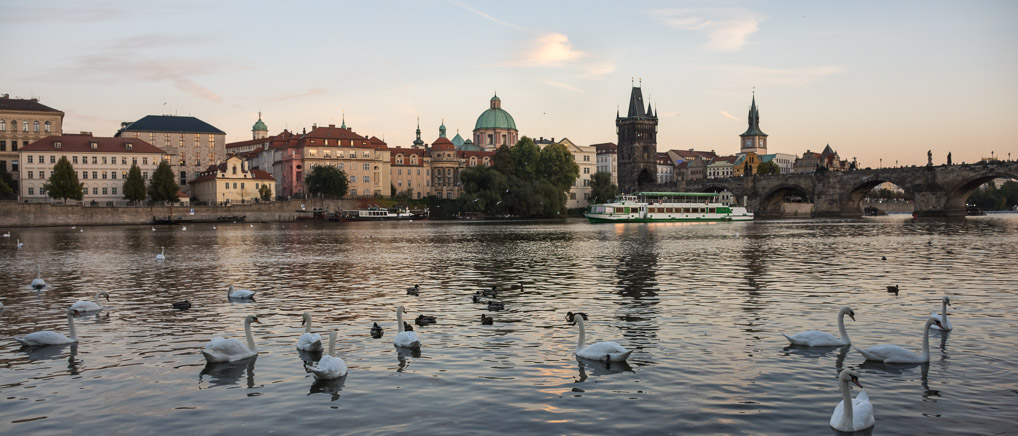We live in Florida and it’s almost a bit of a shock to realize how quickly we can be in Central America. It’s only about a 3 hour flight from Orlando, and closer to 2.5 hours from Miami.
Our flight was uneventful. We filed through customs, collected our luggage and fumbled our way towards the exit where a pleasant young woman was holding a sign with our names on it. In short order we were on the road, catching glimpses of Panama City’s tall, skinny skyscrapers before leaving the urban sprawl behind and entering Soberanía National Park where the Canopy Tower is located.
Soberanía inhabits a strip of rainforest that runs along the eastern side of the Panama Canal. Part of the Canal Zone, this area was controlled by the United States until 1979 when operation of the canal was turned over to Panama. The national park was established in 1980 and counts an impressive 525 bird species and 105 mammal species among its denizens.
Our driver pointed out our destination – a bright blue metal building crowned with its yellow radar dome – nestled in the trees atop a nearby hill. We soon turned off the main road and followed the steep, winding, forested drive that dead ends at the Canopy Tower.
The location of the Canopy Tower is shown on the map below:
The Tower was built by the United States Air Force in 1965 for defense of the Panama Canal. Over the next few decades it served various purposes, including air traffic control, communications, and even drug interdiction (as part of a radar network used to detect the transport of illicit substances from South America). The building was officially decommissioned in 1995 and sat unused for the next few years, until Raul Arias de Para obtained permission from the Panamanian government to convert it into an ecotourism lodge.
Upon arrival we were warmly greeted by Domi and Jenn, two of the excellent guides with the Canopy Family. Jenn gave us an orientation tour and explained the general lay of the land. Meals are served at set times; seating is family-style. Free wi-fi is available, but there are no tv’s or phones in the rooms, and no A/C (each room has a large ceiling fan to help with air circulation). The lodge makes an effort to be conservation-minded, so guests are encouraged to take quick showers, and turn off lights and fans when not in their room. Oh, and the water is turned off each evening around 10:00 p.m. and turned back on early in the morning when the kitchen staff arrives. That last one filled me with a little trepidation, considering that nature does sometimes call in the dead of night. Jenn explained that turning off the water not only reduces usage, but also keeps noise levels down while people are trying to sleep. In a metal structure, sounds can carry like crazy… Russ and I implemented a “toilet-lid-down/courtesy- flush-first-thing-in-the-morning” policy. The nightly water lock-down ended up being a non-issue.
Jenn showed us the dining/library/lounge area located on the top floor of the Tower. The whole space is lined by large windows looking out on the tree-tops. A steep, metal staircase leads up to the rooftop observation deck which encircles the defunct radar dome. The view is 360 degrees and you can see some of Panama City’s distant skyscrapers, as well as a section of the Panama Canal.
We stayed in the Harpy Eagle suite; a decent sized room, but not what most would consider a suite. The furnishings are simple and utilitarian. The ensuite bathroom is compact, basic and has an accordion-style folding door that doesn’t fully extend from floor to ceiling (opening the possibility for all sorts of awkward bodily noises to filter through if you aren’t careful!). The two large windows positioned at mid-story level of the trees are the real selling point of the room.
Clearly, this type of accommodation will not appeal to everyone, but we were actually quite comfortable there. The staff kept things neat and tidy. We slept with our windows open; the combination of natural breeze and ceiling fan did a decent job to keep the temperature comfortable. The Harpy Eagle room is sort of tucked away in its own little corner of the building and we weren’t really bothered by any noise made by the other guests. We did occasionally hear howler monkeys roaring nearby, but that’s a definite perk in my book!
The experience of staying at the Canopy Tower is certainly unique and the hilltop setting, surrounded by rainforest is downright awesome! I would go back in a heartbeat…
We could have joined a birding trip that first afternoon, but we were tired from our early morning and opted to crash in the room until dinner time. That turned out to be a wise choice as the heavens opened shortly after the birding party set out. The rain continued steadily for the remainder of the afternoon and through most of the night. It was really rather soothing listening to it patter against the metal building.
Dinner was a laid back, casual affair. We sat next to a college professor from Melbourne, Australia (originally from Germany), a self-proclaimed “trophy birder” from Madrid, Spain (currently living in Panama), and two U.S. college students who were in Panama studying environmental impacts on coral reefs.
After dinner, resident bats fluttered through the open windows of the dining room. No one minded. We were all there to commune with nature and enjoy the rainforest.









